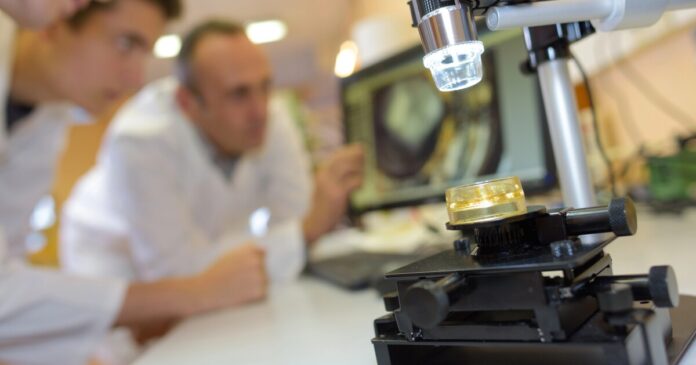Neural tissue engineering aims to mimic the brain’s complex environment, the extracellular matrix, which supports nerve cell growth, development, and proper connectivity. This environment is carefully structured and carries signals that guide how cells behave and interact.
3D tissue-engineered models have strong potential to mimic the brain’s complex structure and function. Yet it’s still difficult to reproduce the brain’s subtle design features in lab settings, since current methods often miss the fine details that shape cell behavior.
Scientists at the University of California, Riverside have now, for the first time, developed functional brain-like tissue without relying on animal-derived materials or biological coatings. Their innovation, called the Bijel-Integrated PORous Engineered System (BIPORES), offers a new, fully synthetic platform for neural tissue engineering.
This breakthrough could significantly reduce, and potentially eliminate, the need to use animal brains in research. It also supports the US FDA’s ongoing initiative to phase out animal testing in drug development.
The new material is mainly made of polyethylene glycol (PEG), a chemically neutral polymer. On its own, PEG is like Teflon to cells; they slide right off. Usually, it needs a helping hand from proteins like laminin or fibrin to keep cells from falling off.
Scientists previously developed a technique called STrIPS to continuously produce tiny particles, fibers, and films with sponge-like internal structures. However, until now, these materials could only be made up to about 200 micrometers thick, limited by how molecules move through the material during formation.
To overcome this, researchers developed the BIPORES system. It combines large-scale fibrous shapes with intricate pore patterns inspired by bicontinuous interfacially jammed emulsion gels (bijels), soft materials with smooth, saddle-shaped internal surfaces. These BIPORES fibers are made from a gel-like PEG solution, which is transformed into a porous network and stabilized using silica nanoparticles.
Using a custom microfluidic setup and a bioprinter, the team then built 3D structures with layered, interconnected pores. These allow nutrients and waste to move freely and support deep cell growth. When tested with neural stem cells, the material encouraged strong cell attachment, growth, and even the formation of active nerve connections.
“Since the engineered scaffold is stable, it permits longer-term studies,” said Prince David Okoro, the study’s lead author. “That’s especially important as mature brain cells are more reflective of real tissue function when investigating relevant diseases or traumas.”
To build the scaffold, the team used a special liquid mix made of PEG, ethanol, and water. PEG doesn’t mix well with water, so it behaves like oil, while ethanol helps everything blend smoothly. This mix flowed through tiny glass tubes.
When it met a stream of water, the ingredients started to separate. A quick flash of light froze that moment, creating a sponge-like structure full of tiny pores. These pores let oxygen and nutrients move freely, helping nourish the stem cells placed inside.
“The material ensures cells get what they need to grow, organize, and communicate with each other in brain-like clusters,” Iman Noshadi, a UCR associate professor of bioengineering, said. “Because the structure more closely mimics biology, we can start to design tissue models with much finer control over how cells behave.”
Right now, the scaffold is just two millimeters across but the team is now working to scale it up and has even submitted a new paper exploring how the same approach could be applied to liver tissue.
Their big-picture vision? To build a network of lab-grown mini-organs that talk to each other, just like real systems do in the human body. They’re aiming for models that are not only stable and long-lasting, but also just as functional as their brain tissue breakthrough.
“An interconnected system would let us see how different tissues respond to the same treatment and how a problem in one organ may influence another,” Noshadi explained. “It is a step toward understanding human biology and disease in a more integrated way.”
From a biomimicry lens, this layered fabrication approach does a much better job of mimicking how real brain tissue behaves. That makes it a powerful tool for studying diseases, testing new drugs, and even developing future treatments to repair or replace damaged neural tissue.
The new study was published in Advanced Functional Materials.


